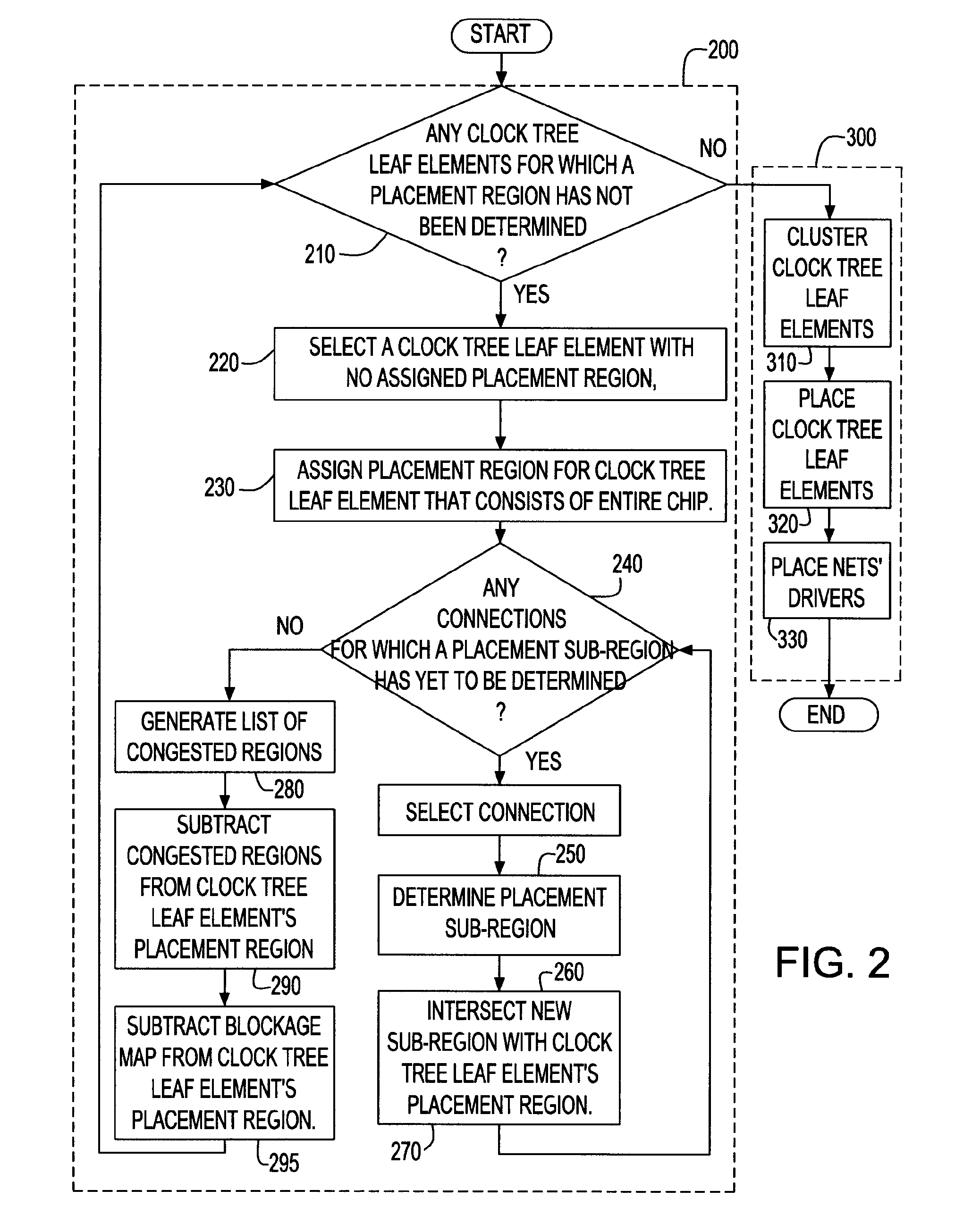Clock tree distribution generation by determining allowed placement regions for clocked elements
a technology of clocked elements and placement regions, applied in the direction of generating/distributing signals, instruments, program control, etc., can solve the problems of reducing affecting the efficiency affecting the timing of clock tree distribution, so as to achieve the effect of minimizing the cost function
- Summary
- Abstract
- Description
- Claims
- Application Information
AI Technical Summary
Benefits of technology
Problems solved by technology
Method used
Image
Examples
Embodiment Construction
[0036]Referring now to FIG. 2, there is shown a flow chart that illustrates the various method steps of the present invention. The basic algorithm consists of two major steps represented by blocks 200 and 300.
[0037]In step 200, a placement region for each clock tree leaf elements is first determined. This is accomplished by assigning an initial placement region, and repeatedly reducing it by intersecting it with sub-regions formed to account for the various constraints on the placement of the clock tree leaf element. The intersection is determined by finding an overlap of two or more regions. In some circumstances, there may be no location which satisfies all the constraints on the clock tree leaf element. To ensure that at least one legal location is found, the original location of the clock tree leaf element is normally included in all the intersected regions, though it may optionally be excluded if the intersection of all sub-regions is not empty and does not include the original...
PUM
 Login to View More
Login to View More Abstract
Description
Claims
Application Information
 Login to View More
Login to View More - R&D
- Intellectual Property
- Life Sciences
- Materials
- Tech Scout
- Unparalleled Data Quality
- Higher Quality Content
- 60% Fewer Hallucinations
Browse by: Latest US Patents, China's latest patents, Technical Efficacy Thesaurus, Application Domain, Technology Topic, Popular Technical Reports.
© 2025 PatSnap. All rights reserved.Legal|Privacy policy|Modern Slavery Act Transparency Statement|Sitemap|About US| Contact US: help@patsnap.com



